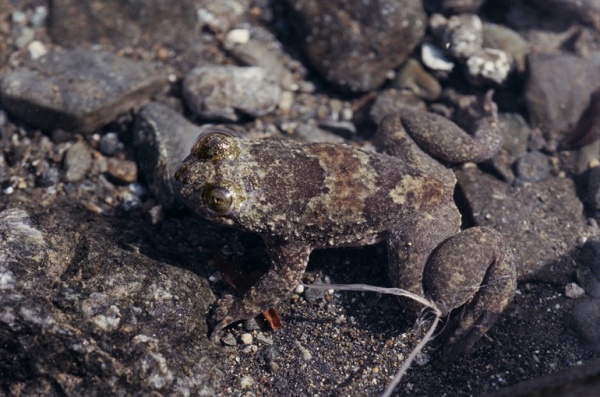Facts About Philippine flat-headed frog
Meet the Philippine Flat-Headed Frog: *Barbourula busuangensis*
==========
The *Barbourula busuangensis*, commonly known as the Philippine flat-headed frog, is an intriguing and distinctive species endemic to a few select islands of the Philippines. Part of the Bombinatoridae family, this frog is currently facing significant threats from habitat loss.
Description
This large aquatic frog is notable for its flat body, with nostrils and eyes situated on the top of its head. Unlike many frogs, it lacks external eardrums. Its limbs are robust and webbed, making it an adept swimmer, and its skin is covered in fine tubercles. The frog exhibits a dark greenish-black coloration with subtle pale green markings on its hind limbs.
Habitat
*Barbourula busuangensis* is indigenous to the western Philippines, particularly the islands of Busuanga, Culion, Balabac, and Palawan. It thrives in the fast-flowing, clear streams of lowland tropical forests, typically at altitudes below 800 meters above sea level. When not floating on the water's surface, it dives to the bottom to hide when disturbed.
Breeding Habits
Little is known about the breeding habits of this elusive frog. Tadpoles have not been observed, but gravid females have been found carrying a few large, unpigmented eggs. This suggests that the species might skip the tadpole stage altogether, undergoing direct development instead. Attempts to breed them in captivity have not been successful.
Conservation Status
The International Union for Conservation of Nature (IUCN) lists *Barbourula busuangensis* as "near threatened." This designation indicates that the species is at risk due to its limited range, fragmented populations, and declining numbers. Primary threats to its survival include habitat degradation caused by agricultural expansion, quarrying, mining, and pollution from agricultural runoff.
